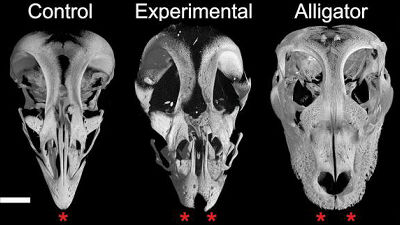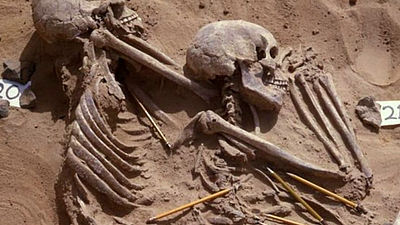AI study reveals leopards ate the faces of early humans around 1.8 million years ago

Early humans and the balance of power: Homo habilis as prey - Vegara‐Riquelme - Annals of the New York Academy of Sciences - Wiley Online Library
https://nyaspubs.onlinelibrary.wiley.com/doi/10.1111/nyas.15321
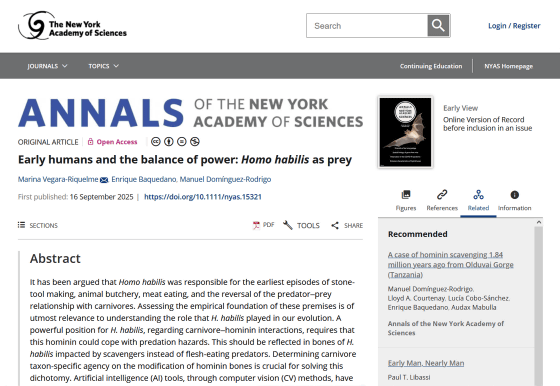
Rice anthropologist among first to use AI to uncover new clues that early humans were prey, not predators | Rice News | News and Media Relations | Rice University
https://news.rice.edu/news/2025/rice-anthropologist-among-first-use-ai-uncover-new-clues-early-humans-were-prey-not
Leopards ate our ancient human ancestors' faces, AI analysis reveals | Live Science
https://www.livescience.com/archaeology/leopards-ate-our-ancient-human-ancestors-faces-ai-analysis-reveals
It has long been thought that Homo habilis was the first member of the genus to use stone tools and was an early carnivore and hunter. However, recent evidence suggests that another early hominin, Homo erectus , once coexisted with Homo habilis, raising the question: which of these two species actually made stone tools and hunted and ate animals?
Previous research has suggested that Homo habilis may have been eaten by large carnivores, based on evidence such as tooth marks found in some specimens. However, because the types of carnivores that left the tooth marks were not well understood, it was unclear whether Homo habilis was actually 'preyed upon' by carnivores, or whether the carnivores simply ate the carcasses of Homo habilis.
A research team led by Professor Manuel Dominguez-Rodrigo , an anthropologist at Rice University in the United States, used AI tools to analyze two Homo habilis specimens: a juvenile known as 'OH 7' and an adult known as 'OH 65,' both of which were discovered in the Olduvai Gorge in Tanzania in the past few decades. OH 7 is estimated to be approximately 1.85 million years old, while OH 65 is estimated to be approximately 1.8 million years old.
When the research team conducted preliminary examination of these specimens, they found previously undocumented carnivore tooth marks in the skulls of each specimen. Below is a carnivore tooth mark found in the lower jaw of OH 7.
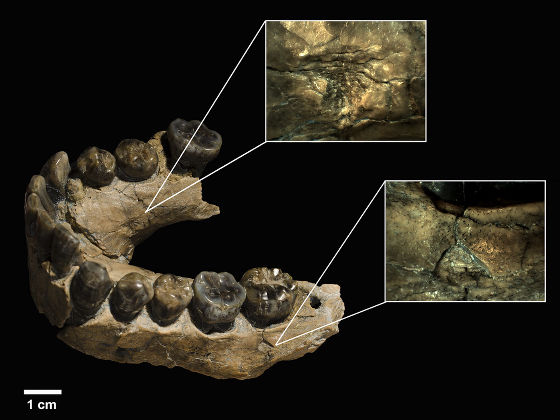
Below are carnivore teeth found on the upper jaw bone of OH 65.
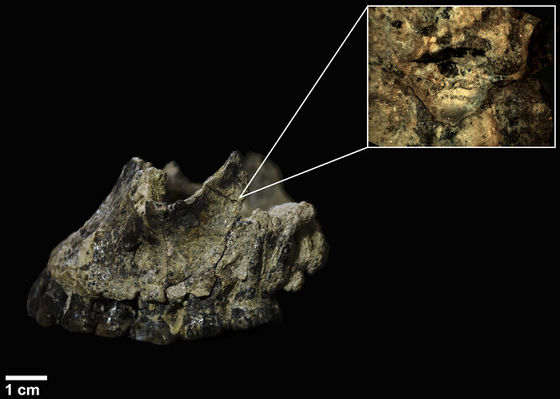
To analyze these bite marks, the team trained a deep learning model to distinguish between bone damage caused by crocodiles, hyenas, leopards, lions, and wolves. In blind tests, the model correctly identified the animals that left bite marks with over 90% accuracy.
Applying this deep learning model to the bones of OH 7 and OH 65, the researchers found that the tooth marks were highly likely to be those of a leopard. Furthermore, because leopards primarily ate the animals they hunted, and because their teeth would have had to remove a significant amount of flesh and tongue to reach the mandible, these findings suggest that Homo habilis at the time was not only preyed on by carnivores, but also consumed as food.
'Human experts are very good at spotting anomalies in prehistoric bones, but there were just too many carnivores back then,' Dominguez-Rodrigo said. 'AI is a game changer. It's taking analytical methods that haven't changed in 40 years and pushing them beyond imagination. For the first time, we can determine not just that these hominins were eaten, but who was eating them.'
Related Posts:
in Science, Creature, Free Member, Posted by log1h_ik
